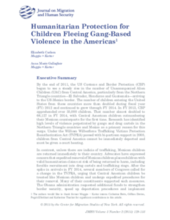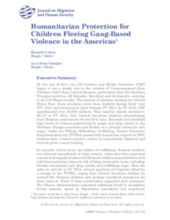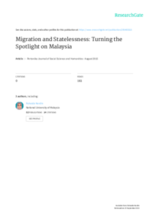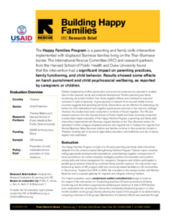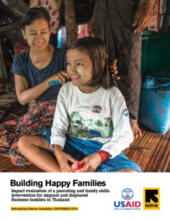Displaying 761 - 770 of 824
This paper provides an overview of the violence perpetrated by gangs and other criminal organizations in Mexico and Central America which compels many children to flee their communities. The paper also describes the US government’s obligations to protect unaccompanied children upon arrival, and good practices of other governments relating to the protection of child migrants and refugees.
This paper provides an overview of the violence perpetrated by gangs and other criminal organizations in Mexico and Central America which compels many children to flee their communities. The paper also describes the US government’s obligations to protect unaccompanied children upon arrival, and good practices of other governments relating to the protection of child migrants and refugees.
The purpose of this paper is to describe hitherto unexplored issues related to sexual abuse of left-behind children of migrant women in Sri Lanka.
This article investigates the relationships and differences between statelessness and migration. Its particular focus is on migration in Malaysia and how migration can lead to statelessness.
This research brief provides an overview of an impact evaluation of the “Happy Families Program,” conducted by the International Rescue Committee (IRC). The Happy Families Program is a parenting and family skills intervention designed for Burmese families living on the Thai-Burmese border.
This report presents findings from the impact evaluation of a parenting and family skills intervention for the displaced Burmese population in Thailand called the Happy Families Program which was implemented by the IRC from 2011 to 2013.
This report, informed by a field study conducted by the International Rescue Committee, provides a summary of findings and presents recommendations aimed at helping policy makers to improve the current and future response to the arrival of unaccompanied children from Central America to the United States.
This article details the introduction of a livelihood project for unaccompanied children in the Dadaab refugee camp in Kenya, which aimed at strengthening the household economy of foster families and improving the care of fostered children.
This document reports on an Institutional Learning Process that has critically analysed the impact and effectiveness of Terre des hommes’ (Tdh) engagement in Albania over the last 14 years. It looks at the role Tdh has played in the emergence of a State Child Protection System (CPS) in Albania.
This report is aimed at synthesizing key concepts and standards regarding the protection of the rights of migrant children and adolescents in the Northern Triangle of Central America.

